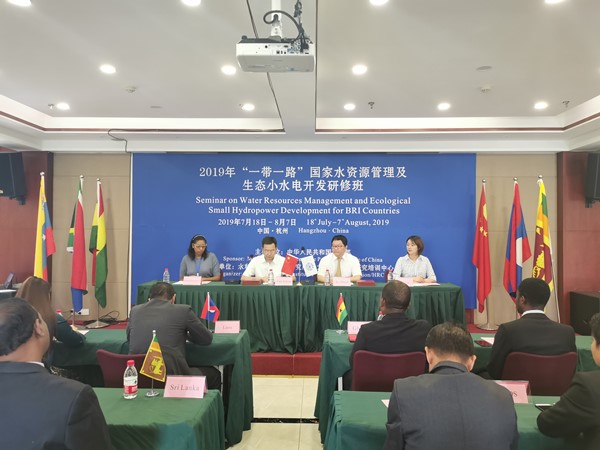By Cai Zhenwei and Xu Xiaodong | chinadaily.com.cn
The Regional Comprehensive Economic Partnership Agreement (RCEP) was officially signed by China, Japan, South Kore, Australia, New Zealand and the 10 ASEAN countries on Nov 15, after eight years of negotiations, marking the creation of the largest free trade area (FTA) in the world. The signing of RCEP demonstrates the willingness and determination of member states to promote free trade and multilateralism in the context of prevailing trade protectionism, unilateralism and anti-globalization. This will not only inject strong impetus into regional and global economic recovery, but also deepen comprehensive economic cooperation between China and ASEAN.
Stimulated by prosperous trade and investment between China and ASEAN, economic cooperation between the two sides has shown great vitality. At present, the accumulated two-way foreign direct investment (FDI) stock of China and ASEAN has exceeded $223 billion. The bilateral trade increased from $292.8 billion in 2010 to $641.5 billion in 2019. China has been ASEAN's largest trading partner since 2009 and ASEAN replaced the US as China's second-largest trading partner in 2019. Despite the impact of the pandemic, China-ASEAN bilateral trade has maintained steady growth this year. From January to November this year, the total value of bilateral trade has amounted to approximately $620 billion. It is highly likely that ASEAN will surpass the EU as China's largest trading partner for the first time. Moreover, it is foreseeable that there are more new opportunities for China-ASEAN communication and cooperation in trade, industry, interconnection and finance when the RCEP agreement officially takes effect.
First, the RCEP helps strengthen the connectedness between China and ASEAN, which both have the most economic viability in the region. The populations of China and ASEAN are 1.4 billion and 650 million respectively, making them largest markets for consumption and regions with greatest economic potential in the world. The average economic growth rate of ASEAN countries from 2000 to 2019 exceeds 5 percent, higher than the world average of around 3 percent. In contrast to continued shrinkage of the global FDI, the FDI in ASEAN countries has consistently increased in the past three years, reaching $149.5 billion in 2019, accounting for 11.5 percent of the global total, reflecting the confidence of global investors in regional prospects. At the same, the Chinese economy has also maintained long-term stable growth. From 1978 to 2017, China's GDP grew at an average annual rate of 9.5 percent, doubling every eight years, which is much higher than the average annual growth rate of 2.9 percent for the world economy in the same period. The Asian Development Bank (ADB) states in its supplementary report Asia Development Outlook 2020 released on Dec 10 that Chinese economic recovery is currently faster than expected, and the Chinese economic growth forecast of 2020 has been raised from the previous forecast of 1.8 percent to 2.1 percent, and it is predicted that Chinese economy will grow by 7.7 percent in 2021.
With the signing and implementation of the RCEP, it will speed up the connection between the two "super-large-scale" markets and increase the level of market integration within the region. China and ASEAN will become important growth engines for the Asia-Pacific region as well as for the global market, contributing regional dynamics to global economic recovery.
Second, the RCEP helps accelerate the construction of industrial chains and value chains in the region. Despite the fact that the RCEP members have different development stages, their economic structures are highly complementary, leaving much potential for cooperation. The RCEP will provide more market access for goods, services and investment among member states, strengthen industrial division and cooperation, improve the mutual integration of supply, industrial and value chains. In particular, the RCEP adopts the criteria of rules of origin through accumulation mechanisms, which will help eliminate the existing "Spaghetti Bowl Phenomenon". The rules of origin are a cornerstone for the existence and development of FTA. Before the RCEP, there were various free trade agreements between regional states at both bilateral and multilateral levels. Different preferential treatments and rules of origin adopted in each agreement led to more and more complicated provisions about the rules of origin. The RCEP has solved this problem. It will effectively eliminate trade barriers, enhance the resilience of China-ASEAN supply chains and industrial chains, and promote the construction of China-ASEAN value chains to achieve efficient collaboration.
Third, the RCEP helps deepen China-ASEAN cooperation in the digital economy. The digital economy of ASEAN countries has exciting prospects. According to the E-Conomy SEA 2020 released by Google, Temasek and Bain & Company on November 10, 2020, despite the challenging economic environment, the Internet industry and digital economy in Southeast Asia maintains steady growing, with a total estimated value reaching 100 billion US dollars in 2020 and exceeding 300 billion US dollars in 2025. The 2019 Digital Economy Report released by the United Nations Conference on Trade and Development (UNCTAD) in September 2019 indicates that China and the US are both in a leading position in the development of the digital economy and have advantages in technology and platforms. In the recent years, government officials, scholars and entrepreneurs in ASEAN countries have paid close attention to the "digital divide" between "under-connected countries" and "hyper-digital countries", hoping to accelerate digital transformation and deepen cooperation with China in fields such as information infrastructure. Chinese advanced technology has hence been the warrantee for China-ASEAN cooperation in this regard.
In the RCEP agreement, it is clearly stated that the development of digital trade will be treated with a more open attitude. The Chapter 12 lists specific provisions on e-commerce. This is the first time a comprehensive and high-level multilateral e-commerce rule has been reached in the Asia-Pacific region. This will provide institutional guarantees for China-ASEAN cooperation in e-commerce. Stepping into the post-pandemic era, the value of the digital economy and its role in promoting the economy will be further highlighted. The digital economy and e-commerce are expected to become new foci for China-ASEAN cooperation in the future.
Cai Zhenwei and Xu Xiaodong are both research fellows at National Institute for South China Sea Studies.







